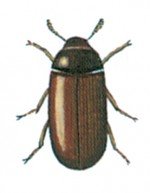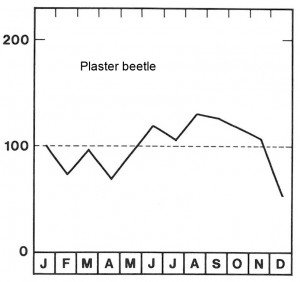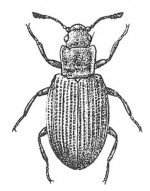Latin: Clavicornia spp.


The name plaster beetle is an umbrella term for a part of the beetles of the genera Cryptophagus, Lathridius, Enicmus, Cartodere and Mycetaea. They are often considered as a group because they have a uniform biology, they are found in the same places and they all belong to the superfamily Clavicornia. Their outer antennae joints are developed as small clubs. Plaster beetles are quite small, only 2-3 mm long. Both beetles and larvae primarily live of mould and mildew. They are common in basements and storage rooms. In moist grain, straw and damp feed there can be found impressive amounts of plaster beetles. Moreover, they occur in all kinds of food that has gone damp and mouldy.

They are associated with the mites and booklice in mould fauna. They rarely do any real damage, but can occasionally damage dried fruit. Their presence is a warning that the product may have decreased in quality due to fungal growth and it may even be unhealthy to consume. Plaster beetles are exterminated and prevented by making sure that the product is dry and stored in a dry environment, or in short time so that the mould fails to make an impact. Chemical control of plaster beetles is quite meaningless alone, but may be an addition to drying products and storage rooms.




